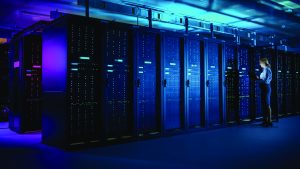Part of any effective energy management plan is determining data center infrastructure efficiency, as measured in Power Usage Effectiveness (PUE). But it can be difficult to establish the PUE for some data center systems for a number of reasons, including:
- It’s not always clear whether the power a device draws should be counted in the data center efficiency calculation.
- Some subsystems are shared with other non-data center functions and it’s difficult or impossible to directly measure the fraction of power attributable to the data center.
- It’s not practical or too costly to instrument the subsystem to determine power consumption.
- Some power measurements include loads that are unrelated to the data center but cannot be separated during measurement
Any given data center will likely suffer from one or more of the above problems, and certainly more than one will exist in data centers located in a shared use facility. But there are ways to overcome the problems.
Categorize everything
First, you need to categorize the data center subsystems as either IT load, physical infrastructure or not included in the calculation.
IT load includes obvious systems such as servers and storage equipment but also networking gear, KVM and monitors, IT equipment located in the NOC and perhaps disaster recovery IT loads, if the disaster site is on the same site as the data center and shares some physical infrastructure. (If the disaster site is in another location, it is not included in the calculation.)
Physical infrastructure includes power, cooling and gear such as switchgear and panel boards (outdoor or indoor), automatic transfer switches, generators, UPSs, static transfer switches, power distribution units (PDUs), disaster recovery power systems (unless the disaster site is separate), chillers, chilled water pumps, condenser water pumps, air compressors, and CRAH/CRAC units.
Systems that should not be included in the calculation include alternative energy systems, such as solar and wind, outdoor lights, personnel office loads, and lights in data center’s personnel areas.
Estimate shared loads
Some devices that consume power and are associated with a data center are shared with other uses, such a chiller plant that also serves an adjacent office building. Many take the approach of simply omitting shared devices from the PUE calculation, but this results in potentially major errors, especially if the device is a major energy user such as a chiller
The goal should be to estimate, or indirectly measure, how much of the power consumed by the device can be attributed to the data center. To indirectly measure the performance of a device, for example, simply shut off the non-data center loads on the device, then measure its power draw to determine the power associated with the data center.
Software management tools can also help. For example, the InfraStruXure Central data center management suite from APC by Schneider Electric offers a continually increasing number of options to handle shared resources in its energy management tools.
To learn more about how to more accurately calculate PUE, read about the standard approach that APC by Schneider Electric has developed in the white paper, “Guidance for Calculation of Efficiency (PUE) in Data Centers.”
